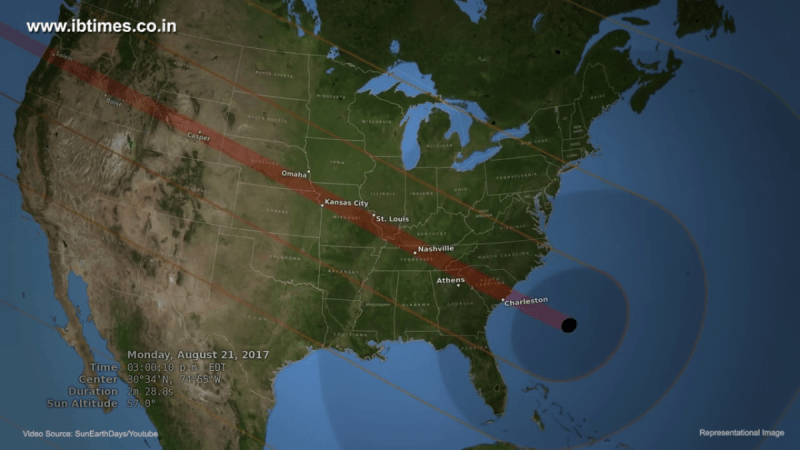The solar eclipse will take place on Monday, August 21, for the first time since 1918. The event, which is expected to last for nearly two daylight hours, with two minutes of darkness, will begin at 1.15 pm EDT (10.45 pm IST) and end at 2.49 pm EDT.
Total solar eclipses occur once every 12 to 18 months while partial solar eclipses, when the moon blocks only part of the sun, occur more frequently, though visibility varies, according to NASA.
What is a total solar eclipse?
A total solar eclipse is when the moon moves between the sun and Earth, lasting for up to about three hours from beginning to end. The disk of the moon appears to completely cover the disk of the sun in the sky.
Who can see the Solar Eclipse?
Everyone in North America plus parts of South America, Africa, and Europe will see at least a partial solar eclipse, while the thin path of totality will pass through portions of 14 states.
Where will the total solar eclipse be visible?
The path of totality for August 21, 2017, total solar eclipse is about 70 miles wide and stretches from Oregon to South Carolina. It passes through Idaho, Wyoming, Nebraska, Kansas, Missouri, Illinois, Kentucky, Tennessee, Georgia, North Carolina and South Carolina.

How long will it be?
For this eclipse, the longest period when the moon completely blocks the sun from any given location along the path will be about two minutes and 40 seconds. The last time the contiguous U.S. saw a total eclipse was in 1979.
India Connection?
The Delhi-based Science Popularisation Association of Communicators and Educators (SPACE, India) will live-stream the upcoming August 21 total solar eclipse on a YouTube channel for the Indian audience.














